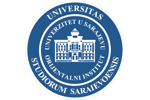The Study of Cultural Heritage of Bosniaks in the Arabic Language
Keywords:
valorizacija, cultural heritage, Arabic language, Bosnia and Herzegovina, manuscripts, books, valorisationAbstract
The beginnings of the study of cultural heritage of Bosniaks in Arabic was linked to the period from the end of 19th and the beginning of the 20th centuries when, in the journals Salnama and Vatan, Ibrahim Bašagić and Teufik Okić published their first bibliographic outlines of a number of our authors. Two crucial works were published afterwards, necessary to all research on Bosniak literature in Arabic, Turkish or Persian – Bošnjaci i Hercegovci u islamskoj književnosti (1912) by Safvet-beg Bašagić and Književni rad bosansko-hercegovačkih Muslimana (1933) by Mehmed Handžić.
One can speak about the systematic and institutionalized research on the cultural heritage in Bosnia and Herzegovina only after the establishment of the Institute for Oriental Studies and the Department of Orientalistics in the Faculty of Philosophy in Sarajevo in 1950. Owing to the work of these two institutions, the cultural heritage has been approached through professional research done by the skilled researchers in the frame of a certain system. The work on collecting the data that includes expanding the biographic and bibliographic outlines or presenting the unknown authors and works has been intensified, and the researchers have been mostly specialized in certain fields. Their research follows the same pattern.
It is important to point out that, primarily owing to the development of literary and critical thought, in contemporary age, necessary philological research has been more often overcome by the method of the philological analysis of the text and by using the critical approaches situated in the context of history of the subject.



